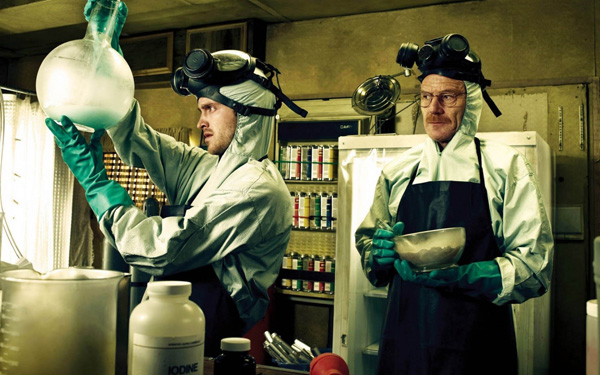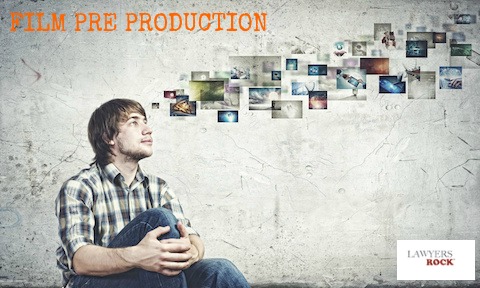 You are finally done with all your filming! So does this mean your ready to release your project to the world? Well unfortunately NO! You have completed the first 2 of the 3 steps necessary to take your work from script to screen. But, its not quite over yet and there is still plenty of work ahead.
You are finally done with all your filming! So does this mean your ready to release your project to the world? Well unfortunately NO! You have completed the first 2 of the 3 steps necessary to take your work from script to screen. But, its not quite over yet and there is still plenty of work ahead.
Now that you have all your footage you are entering into the Film Post Production process.
As you will recall the first two steps of filmmaking are: Pre-Production and Production.
In “post” is where all the editing takes place and all that footage is cut down into a compelling story that will hopefully resonate with your audience.
Overview of Post Production
- In Post-Production individual shots and cut scenes, called raw footage, are turned into a finished polished motion picture experience that hopefully the director is pleased with.
- By now, the Film Editor has assembled a rough Cut from the Dailies, which is the raw footage from each day’s shooting.
- The Director will oversee the Editor to splice all of the usable footage together into a coherent story line according to the script, including the Director’s style for the film. After the allotted amount of time the Director will lock his/her cut of the film. This is known as the “Director’s Cut”.
- The Director’s Cut of the film will be shown to the Studio or Network and notes will be given by executives. The notes will be addressed and implemented.
- The film will be officially “Locked”. From this point on, not a frame of film can or will be changed.
All the work on a film or a television program that takes place after shooting or videotaping is completed, occurs in post-production.
From this point on, all of the following will happen simultaneously; music, sound, the final mix, Computer Generated Imagery (CGI), color correction and timing, finishing on film vs. digital.
Music
Music Spotting
- The spotting session is when a director and composer get together to watch the film and decide where the music is going to be and what it’s going to do. The Director discusses type, mood, tempo, characteristics, and positioning of music with the films composer. This occurs before the composers starts writing the music.
Music will be Composed
- The Composer will write a musical score for the film based on the Director’s input and vision to create dramatic or comical effects in the background or to enhance the narrative. Although this is in the background it really impacts the mood of any scene.
- The music that is composed will either be digitally created or recorded with an orchestra.
Pre-existing Music will be Arranged
- The Music Supervisor will acquire and license music from other areas that will be used in the Film / TV Episode. It can be complicated to find out who owns the rights to music and how to go about acquiring those rights for the project. That is why a specialist like a Music Supervisor is used in these situations.
Sound
It is important that Soundtrack is very well done, with full sound effects and clean crisp dialogue. Various departments will handle each aspect of sound with a list below of the typical groups.
Dialogue Editor
The Dialogue Editor cuts the Dialogue tracks and cleans up the dialogue. Examples of what they are looking to correct are overlaps and rough editing between words among other things.
Foley Editor
A Foley Editors job is to actually create “Sound-alikes.” Effects such Footsteps, the rustling of clothing, breaking glass, horses hooves, etc. all make a scene seem real. This work is done in whats called a Foley room where sound effects are recorded and a Foley Artist records these sound effects live while they are watching the movie.
Sound Effects Editor
A Sound Effects Editor records sound effects and actual location along with taking effects from existing Sound Effects Libraries. They also record and edit the Walla, which is the indistinguishable sounds of people talking in the background (crowd murmur). The Sound Effects Editor also combines all the effects, including Foley, the recorded, and existing sounds on separate multiple tracks for use in the final Sound Mix
ADR – Automated Dialogue Replacement
ADR is when the actors are brought in to Sound Studio to record specific Dialogue for the purpose of:
- Improving Performance
- Enhancing Performance
- Adding sound ( For ex: Grunts in fight, breathing)
- Adding Off-Screen Dialogue
- Clarifying and explaining story points
- Fixing a problem with a scene
All of above is cut into the film by Dialogue Editor.
The Final Mix
The final mix is possibly the most exciting time in the film making process. It is where the film comes completely together. This process can take anywhere from a few days to a few months, depending on the size and scope of the picture.
- All of the following are present in Sound Room with console and large screen: Director, Producers, Editor, Sound Editors, Mixer and Crew, Composer, Music Supervisor.
- All of the component sound parts of the film are added step by step for the first time; Dialogue, Music, Special Effects, Walla.
- A “Mixer” starts and stops them at various points. The Mixers work off of cue sheets and equalize all sound to get the best results.
Computer Generated Imagery
CGI is the use of computer generated graphics in film or TV to create images that would be otherwise impossible or incredibly expensive to create in real life. For ex: Monsters, Other Worlds, Natural Disasters and Aliens. This widely used now in films such as, Avatar, Transformers, Matrix, Planet of the Apes, etc.
- During the Post Production, using powerful computers, animators and digital effects artists can construct fictional worlds and virtual characters that are so lifelike and convincingly real that the audience completely suspends its disbelief.
- All done in Post Production, CGI is combined with the use of Blue or Green Screen shots during production that allows the actors to interact with the computer animation. Once completed, all CGI shots are inserted into the final cut of the film to blend in without notice.
Color Correction and Timing
- Adjust the color to an aesthetically pleasing look
- Matches color from shot to shot to keep consistency colors and color temperatures
- Usually works off of flesh tone that should be kept normal
Finishing on Film vs. Digital
Traditionally, Movies and TV shows have always been completed on film. Within the last approximately 25 years though, digital completion has become the standard. Here is a comparison between Film and Digital Video completion and how it works.
Film
- Movie / TV Series would be shot on Film, and Negative would kept in temperature controlled vault
- Editor would cut dailies on work print, which is rough copy on film of what was shot
- Cutting would be done on manual machine such as Upright Moviola or Steenbeck
- Film would be cut by Guillotine and a attached by Editing Tape
- Once film was completed, it would be matched back to original negative by a Negative Cutter
- Film would be manually Color Corrected and Opticals will be inserted
- Release Prints would be created and sent out to theaters
Digital
- Movie / TV Series is shot on film or Video, either to Tape, Digital Video Card, or Hard Drive
- Dailies will be uploaded or digitized by Assistant Editor and conformed to low-resolution to be ready for editing
- Editor will cut on Non-linear Digital Editing System such as Avid or Final Cut. All opticals and transitions will be placed in film as it is cut
- Cutting of Film is completed and EDL, ( Edit Decision List) is generated for Online completion
- Like the Negative cut of Film, the Online Session in Digital will use the EDL to match back to the original High Resolution Masters
- Film will go through Telecine – Color – Correction
- Film will be completed for theaters or prepared for TV broadcast
Don’t forget the paperwork
Of course, everything that has been mentioned in this series must have an Agreement or no distributor will touch your project.
If you are an Independent Filmmaker I offer an affordable package that will give you the basic agreements you need for any film project. Film Agreement Package
It’s A Wrap!
Now that Post Production is done your project is ready to be released to the world and gain you millions of adoring fans (well let’s hope so, critics can be so harsh!)
I hope you enjoyed this 3 part series on TV/Filmmaking production as much as I enjoyed creating it for you. If there is enough interest I may turn the whole series into one free, easy to download Ebook. If you would be interested in that leave me a comment below.
Take care and see you soon.

 Keylight
Keylight

 There are hundreds of what I call ‘entertainment entrepreneurs’, people working independently in the industry and finding success. I love to spotlight these people so we can all learn how they made a successful career in entertainment and did it on their own terms.
There are hundreds of what I call ‘entertainment entrepreneurs’, people working independently in the industry and finding success. I love to spotlight these people so we can all learn how they made a successful career in entertainment and did it on their own terms.